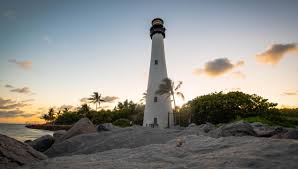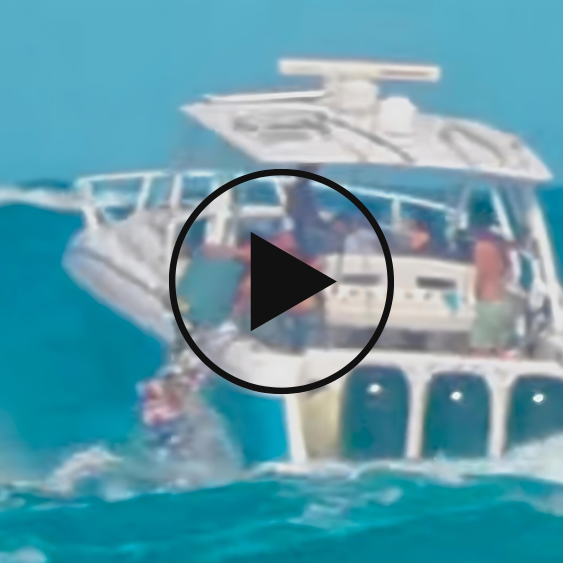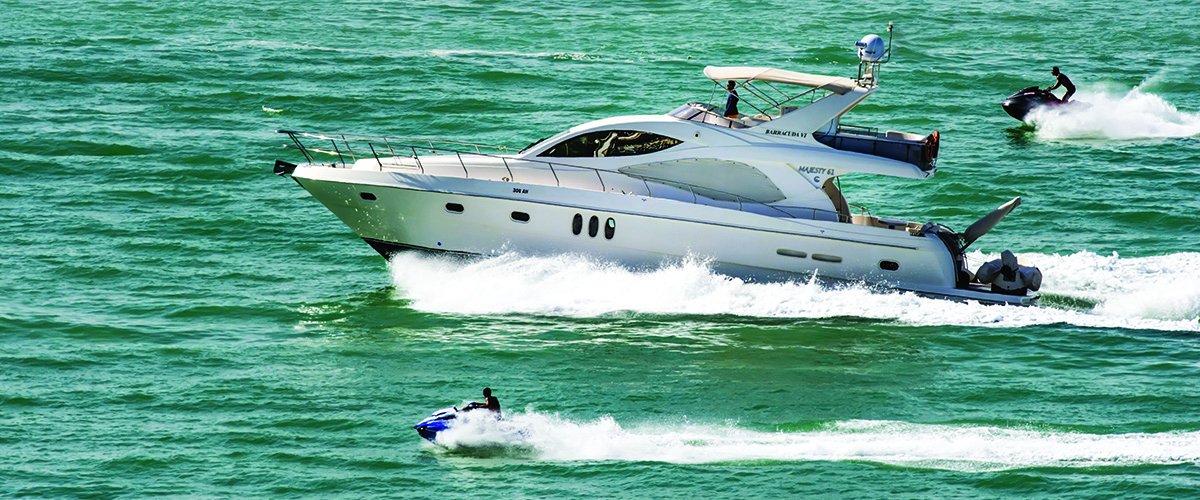What is a Gale Warning: Essential Facts and Safety Tips
Gale warnings are crucial alerts for coastal regions and mariners. They signal the presence of strong and sustained winds.
These warnings are issued by national weather forecasting agencies around the world to help protect lives and property from potential damage due to gale force winds. Gale warnings directly pertain to winds blowing at a speed of 34 to 47 knots (39-54 miles per hour or 63-88 kilometers per hour) which are either occurring, imminent, or likely within 24-hours.
Understanding the implications of gale warnings is essential for individuals residing in coastal areas and those navigating in the open seas. These warnings help them take necessary safety measures and precautions to protect both themselves and their vessels from the dangerous weather conditions accompanying gale-force winds. Moreover, being aware of the issuing authorities and regions, as well as communication and alert systems, further aids in staying safe during such events.
Key Takeaways
- Gale warnings are issued to alert coastal regions and mariners of strong, sustained winds of 34 to 47 knots.
- These warnings play a crucial role in ensuring the safety of individuals and property by encouraging necessary precautions.
- Familiarity with the issuing authorities, regions, and communication systems can greatly enhance overall safety during gale-force winds.
Understanding Gale Warnings
Definition and Criteria
A gale warning is an important weather alert issued by meteorological authorities to inform mariners, coastal residents, and people engaging in water-based activities of the potential occurrence of strong winds1. These warnings are generally issued when winds within the range of 34 to 47 knots are expected2. Winds at this speed can cause damage to property and pose a serious threat to the safety of those on land and sea2.
Gale warnings are based on the intensity of sustained surface winds3. These are the winds averaged over a ten-minute period, whereas the momentary gusts may be higher3. When a gale warning is issued, it indicates that gale-force winds are either occurring, imminent, or likely within 24 hours3.
In cases where there is a chance of even stronger winds, authorities might issue a storm watch or a tropical storm warning1. It's essential for those receiving these alerts to stay informed and take the necessary precautions to ensure their safety.
Beaufort Wind Force Scale
The intensity of the wind is measured using the Beaufort Wind Force Scale, which categorizes wind speeds into various levels on a scale of 0 to 121. This scale helps mariners, forecasters, and the public to easily understand and identify wind conditions. Here's a brief overview of the Beaufort scale as it relates to gale and storm conditions:
| Beaufort Scale Number | Classification | Wind Speed Range (knots) | Description |
|---|---|---|---|
| 8 | Gale | 34 - 40 | Fresh to strong gale, difficult for walking |
| 9 | Strong Gale | 41 - 47 | High wind, causing minor structural damage |
| 10 | Storm | 48 - 55 | Destructive, trees uprooted, and roofs damaged |
| 11 | Violent Storm | 56 - 63 | Rare, extremely destructive, and widespread damage |
| 12 | Hurricane | ≥ 64 | Most destructive, catastrophic damage |
Within this scale, wind speeds associated with gale warnings constitute a Beaufort Scale Number of 8 or 9, which falls into the classification of a gale or a strong gale4. Higher Beaufort scale numbers indicate more severe weather phenomena such as storms, violent storms, hurricanes, and tropical cyclones4.
Footnotes
- https://en.wikipedia.org/wiki/Gale_warning ↩ ↩2 ↩3
- https://livablefordvillage.com/understanding-gale-warning-and-weather-alert-meaning/ ↩ ↩2
- https://www.oceanweatherservices.com/blog/2018/10/29/gale-warning-mean/ ↩ ↩2 ↩3
- https://watersportivity.com/what-is-a-gale-warning/ ↩ ↩2
Implications of Gale Warnings
Maritime Safety
Gale warnings are crucial for ensuring the safety of mariners and vessels at sea. National weather forecasting agencies around the world issue these alerts when maritime locations are experiencing or are expected to experience gale-force winds on the Beaufort scale.
They play an essential role in allowing sailors to take precautionary measures, such as:
- Adjusting their course to avoid the hazardous weather
- Reducing sail area and securing loose items on the vessel
- Seeking safe anchorage or remaining in port if the warning is issued before departure
Gale warnings often indicate the presence of high waves and rough seas, further increasing the potential risks for vessels at sea. In these conditions, it is vital for mariners to stay informed about the latest weather updates in order to take appropriate action and maintain their safety at sea.
Onshore Risks
While gale warnings primarily target maritime activities, they can still have implications for people on land. High winds associated with gale-force conditions can lead to coastal flooding, erosion, and other hazardous conditions near the shoreline.
People living or working in coastal areas should be aware of the potential risks and take necessary precautions, such as:
- Staying away from the shoreline during high winds and stormy conditions
- Securing outdoor items, such as patio furniture and garbage cans
- Ensuring that their homes are protected from potential flooding by installing sandbags or flood barriers
In addition, strong winds can create dangerous situations for individuals participating in outdoor activities, such as hiking, cycling, or even walking. It's essential to be aware of the weather conditions and plan accordingly to avoid potential hazards.
Issuing Authorities and Regions
There are various issuing authorities responsible for providing gale warnings in different parts of the world. In this section, we will discuss some of the major organizations that issue gale warnings to ensure the safety of maritime activities and coastal residents.
United States National Weather Service
In the United States, the National Weather Service (NWS), an agency under the National Oceanic and Atmospheric Administration (NOAA), is responsible for issuing gale warnings. The NWS primarily focuses on maritime areas and the Great Lakes, where strong winds can cause dangerous conditions for vessels and coastal communities.
Gale warnings issued by the NWS are typically in effect when winds of 34 to 47 knots (39 to 54 mph) are imminent or occurring. source
Meteorological Offices Worldwide
- United Kingdom: The Met Office is the national meteorological service responsible for issuing gale warnings in the UK. These warnings help mariners and coastal residents prepare for strong winds with significant impacts on sea conditions and coastal zones. source
- Canada: Environment and Climate Change Canada (ECCC) is the Canadian government department responsible for issuing gale warnings through the Meteorological Service of Canada. ECCC ensures that marine users and coastal residents are informed about potential strong wind events that may pose threats to life and property. source
- Iceland: The Icelandic Meteorological Office is the national weather agency responsible for issuing gale warnings in Iceland. It is tasked with providing accurate and timely forecasts and warnings to ensure the safety of both maritime activities and coastal residents. source
These meteorological offices and agencies work together to maintain a coordinated global weather system. This enables them to provide accurate and up-to-date gale warnings to mariners, coastal residents, and relevant stakeholders. The goal of these authorities is to minimize the impacts of strong winds and ensure the safety of all individuals affected by such weather events.
Communication and Alerts
Warning Flags and Signals
Gale warnings are typically communicated through various means, including flags, pennants, and lights. The coastal warning display program utilizes flag systems to indicate different wind conditions and advisories.
For instance, if a gale warning is in effect, two red pennants may be hoisted to convey the message.
Aside from gale warnings, other warning signals might include:
- Hurricane force wind warning – Solid red flags
- Hurricane force wind watch – Red and black checkerboard flags
- Hurricane warning – One red flag accompanied by a black square
- Hurricane watch – One red flag
- Tropical storm watch – Elevated yellow shapes, such as a square or circle
In some cases, colored lights might also be used during nighttime or periods of low visibility to signal gale warnings and other wind-related advisories.
Digital and Social Media Alerts
With advancements in technology, gale warnings are also communicated through digital and social media platforms.
National weather services issue alerts via their official websites, mobile apps, and social media channels, ensuring vital information reaches people in potentially affected areas.
These digital alerts provide detailed information about the wind conditions, including the severity, duration, and potential impacts. This allows those at sea or near the coast to take necessary precautions and ensure their safety.
Understanding Weather Patterns
Weather patterns are complex systems that change over time and have a significant impact on our daily lives.
To better understand gale warnings, it's important to recognize the processes involved in gale development and the role of anticyclones and pressure systems.
Gale Development
Gales are a result of large-scale weather systems, often involving low-pressure systems and sometimes cyclones or tropical cyclones.
A gale warning is an alert issued by national weather forecasting agencies when there is potential for winds of gale force, ranging from 34 to 47 knots (39 to 54 mph) on the Beaufort scale1.
Gale warnings help mariners and coastal residents prepare for strong winds, which can pose risks to property and safety.
The development of a gale may be influenced by several factors, including:
- Atmospheric pressure: The interaction between low and high-pressure systems plays a critical role in generating strong winds.
- Temperature gradients: Temperature differences between air masses create pressure imbalances that drive wind formation.
- Jet stream: The upper-level atmospheric flows called jet streams guide and enhance the growth of surface-level weather systems.
- Hurricane or tropical cyclone: In some cases, gale-force winds are associated with hurricanes and tropical cyclones, which also produce heavy rainfall and storm surges.
Anticyclones and Pressure Systems
Pressure systems – high-pressure systems (anticyclones) and low-pressure systems (cyclones) – are significant factors in shaping the weather.
The difference in air pressure influences the wind direction and speed, as well as the development of various weather patterns.
- Anticyclones: Anticyclones are high-pressure systems characterized by the clockwise rotation of air in the Northern Hemisphere and counterclockwise rotation in the Southern Hemisphere. They typically cause calm, dry, and settled conditions since the descending air reduces cloud formation and precipitation. This can contribute to the dissipation of gales2.
- Low-pressure systems: Low-pressure systems, or cyclones, have a counterclockwise rotation in the Northern Hemisphere and a clockwise rotation in the Southern Hemisphere. They bring unstable weather, such as rain, thunderstorms, and strong winds. Low-pressure systems are often responsible for the development of gale-force winds3.
Safety Measures and Precautions
Onboard Safety Protocols
During a gale warning, it is crucial for sailors and crew members to implement onboard safety protocols to navigate through the strong winds and hazardous conditions.
Communication and coordination among the crew are vital in these situations. Here are some precautionary actions to take onboard:
- Monitor weather updates: Regularly check for updates or changes in the gale warning and sea conditions.
- Secure loose equipment: Fasten all loose items and equipment on deck to prevent damage or injuries caused by items being thrown around by strong winds.
- Don life jackets: Make sure all crew members wear life jackets for additional safety and protection.
- Close watertight doors and hatches: This ensures that water does not enter the vessel, maintaining stability in rough seas.
- Reduce speed and keep a safe distance: Slowing down and maintaining a safe distance from other vessels and environmental hazards minimizes the risks associated with strong winds and high waves.
Shoreline and Coastal Preparations
People living on or near the shoreline should also be prepared for the potential impact of gale warnings on their environment. Some steps that can be taken to protect property and ensure personal safety include:
- Shelter and evacuation: Identifying nearby shelters or safe locations to evacuate to in case the gale warning escalates to a more severe storm or hurricane.
- Securing property: Reinforcing windows, doors, and roofs to minimize potential damage caused by strong winds. This includes removing or securing outdoor furniture and other items that might cause harm if airborne.
- Coastal flooding awareness: Be aware of potential coastal flooding and know the best routes for evacuation should it occur.
- Stay informed: Monitor local news, weather radio, and marine forecasts to stay updated on the gale warning and related weather alerts.
Historical and Cultural Context
Origin of 'Gale'
The term "gale" has its roots in Middle English, originating from the Old Norse word "gala," which means "to sing" or "to enchant."
In relation to weather, "gale" took on the meaning of a strong wind that "sings" as it blows. The use of the word "gale" to describe stormy winds has been in use since at least the late 16th century, appearing in various historical references discussing maritime navigation and safety.
Evolution of Marine Warnings
The progression of marine warnings has been significant throughout history, from relying on simple observations to using sophisticated technology and communication systems to share vital information.
- Shipping Forecast: This is a crucial part of maritime history, as it has been instrumental in protecting seafarers from approaching storms. The shipping forecast has been a mainstay of marine weather warnings in the UK since the mid-19th century. Developed by Admiral Robert FitzRoy, the founder of the UK Met Office, it provides detailed forecasts of wind speeds, directions, and weather conditions for specific areas around the UK and European waters.
- Gale Warning Flags (USA): Before modern communication technology, gale warning flags were used in the United States as a visual indicator of approaching gale-force winds. These double pennant flags, typically red with a black square in the center, would be hoisted at various coastal locations to alert mariners of impending gale conditions.
- Forecasting Technology: Advances in technology, including satellite imagery and computer models, have dramatically improved marine weather forecasting. Today, maritime weather agencies, such as the National Weather Service in the US and the UK Met Office provide highly accurate and detailed forecasts for seagoing vessels, including specific gale warnings and other marine hazard alerts.
Frequently Asked Questions
Is gale warning dangerous?
Yes, gale warnings can be dangerous, particularly for mariners and coastal residents.
These warnings are issued when sustained surface winds of 34 knots (39 mph) to 47 knots (54 mph) are either occurring, imminent, or likely (source). Gale force winds can lead to high waves, stormy seas, property damage, and dangerous maritime conditions.
What distinguishes a gale warning from a wind advisory?
A gale warning is typically issued for maritime locations and focuses on sustained wind forces of 34 to 47 knots, while a wind advisory is issued for land-only locations when there's potential for winds of 31 to 39 mph, with gusts ranging between 46 to 57 mph (source).
While both types of alerts address strong wind conditions, their geographical focus and wind speed requirements vary.
At what wind speed does a gale warning become a storm warning?
A gale warning becomes a storm warning when sustained winds reach 48 to 63 knots (55 mph to 73 mph).
Storm warnings indicate even more hazardous conditions than gale warnings and require mariners to take additional precautions to ensure safety at sea.
What are the differences between a gale watch and a gale warning?
A gale watch is issued when there's a potential for gale force winds within a specified timeframe, usually within 24 to 48 hours.
A gale warning, on the other hand, is issued when gale force winds are already occurring, imminent, or expected within 24 hours (source). The primary difference between the two alerts is the certainty and immediacy of the wind conditions.
Are gale warnings indicative of winds stronger than hurricane conditions?
No, gale warnings are not indicative of winds stronger than hurricane conditions.
Hurricane conditions require sustained winds of 64 knots (74 mph) or higher. This is significantly stronger than the wind speeds associated with gale warnings (source).
Gale warnings are still indicative of potentially hazardous wind conditions but are not as severe as hurricane warnings.
Charlie is Editor-in-Chief of Sea Magazine







